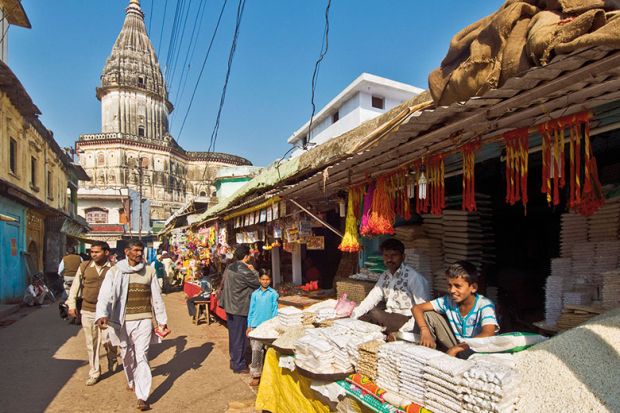India is a dream market for private higher education providers. The size and value of its university sector are already enormous, and they will only keep growing over the coming years.
A huge 29 per cent of India’s population is under the age of 15. Between 2010 – when the government began to carry out the All India Survey of Higher Education – and 2016, the college-going population increased from 27.5 million to 35.7 million. Moreover, the government is determined to increase the gross enrolment ratio of young people in tertiary education from its current 25.2 per cent to 30 per cent by 2020. That is expected to result in the value of the higher education market expanding from its current $15 billion (£11.4 billion) to $27 billion.
That market is being taken over by private colleges and universities. Between 2006-07 and 2011-12, the number of public institutions in India grew by 49 per cent, to 16,768, while the number of private institutions increased by 63 per cent, climbing to 46,430 – nearly three times the number of public institutions.
A large majority of these are small and narrowly focused, enrolling far fewer students than public institutions. But overall student numbers at private universities also show an upward trend. Whereas 61 per cent of all students attended private institutions in 2010, in 2016 that figure had risen to 67.3 per cent. By 2020, it is likely to hit 75 per cent.
This growth is driven largely by necessity: the public sector has simply not been able to expand sufficiently quickly to meet the mushrooming demand for college degrees in India. But public universities remain the first choice of most students and their parents (who typically foot the bill for college education).
This is due to two factors. First, private institutions cost more – typically two to three times more – than public institutions. That is in a country in which even public education is too expensive for many; the 2014 National Sample Survey found that nearly 45 million young Indians between the ages of 18 and 24 were too poor to pursue higher education.
Second, most private institutions are notoriously predatory and simply deliver junk education at high cost. Private universities are required by law to be non-profit, but it is common knowledge that most are not. The widely cited T. S. R. Subramanian committee report on education policy, published in 2016, refers to such institutions as “degree shops”.
However, the negative perceptions of private universities are changing because the number of those that do provide a good quality education is being boosted by new institutions, such as Ahmedabad University and Ashoka University.
Moreover, the teaching at most of India’s public institutions is also poor – albeit for different reasons. Most students in the public sector are enrolled in “state universities”, those managed and financed by state governments. These are financially starved and ruthlessly abused by political leaders, with the result that they too bear very little resemblance to the “temples of learning” of popular Indian parlance. Most state-run institutions are broken temples, beyond repair.
The expansion of private institutions is also a result of their savviness at filling gaps in the market. For instance, since the 1980s – and more so since 1991, when India started to liberalise its economy – a growing number of students have opted to study for a bachelor’s degree in engineering followed by an MBA in order to land their dream jobs. There have never been sufficient numbers of public engineering and management schools to cater for such students, so the private sector stepped in with specialised engineering- and management-focused institutions. Young Indians have flocked to them.
But while India’s private universities have undoubtedly played a big role in meeting the demand for college degrees, it remains to be seen how many of them are interested in or capable of taking the next step and delivering better quality education. India’s young people and the country in general desperately need them to do just that.
Pushkar is director of the International Centre Goa.
Register to continue
Why register?
- Registration is free and only takes a moment
- Once registered, you can read 3 articles a month
- Sign up for our newsletter
Subscribe
Or subscribe for unlimited access to:
- Unlimited access to news, views, insights & reviews
- Digital editions
- Digital access to THE’s university and college rankings analysis
Already registered or a current subscriber? Login








